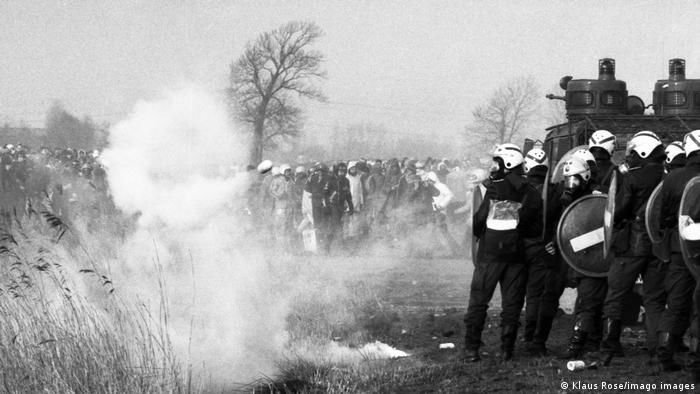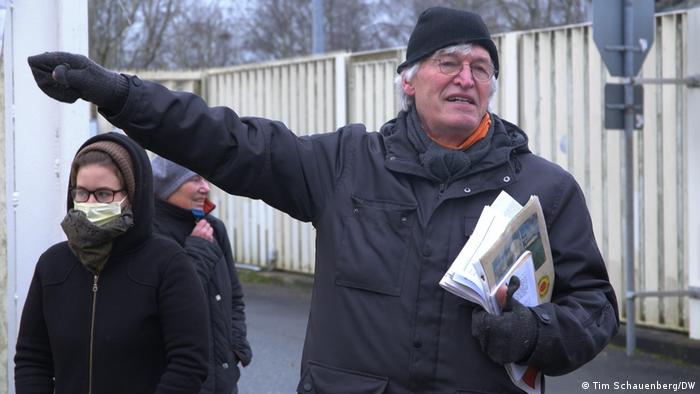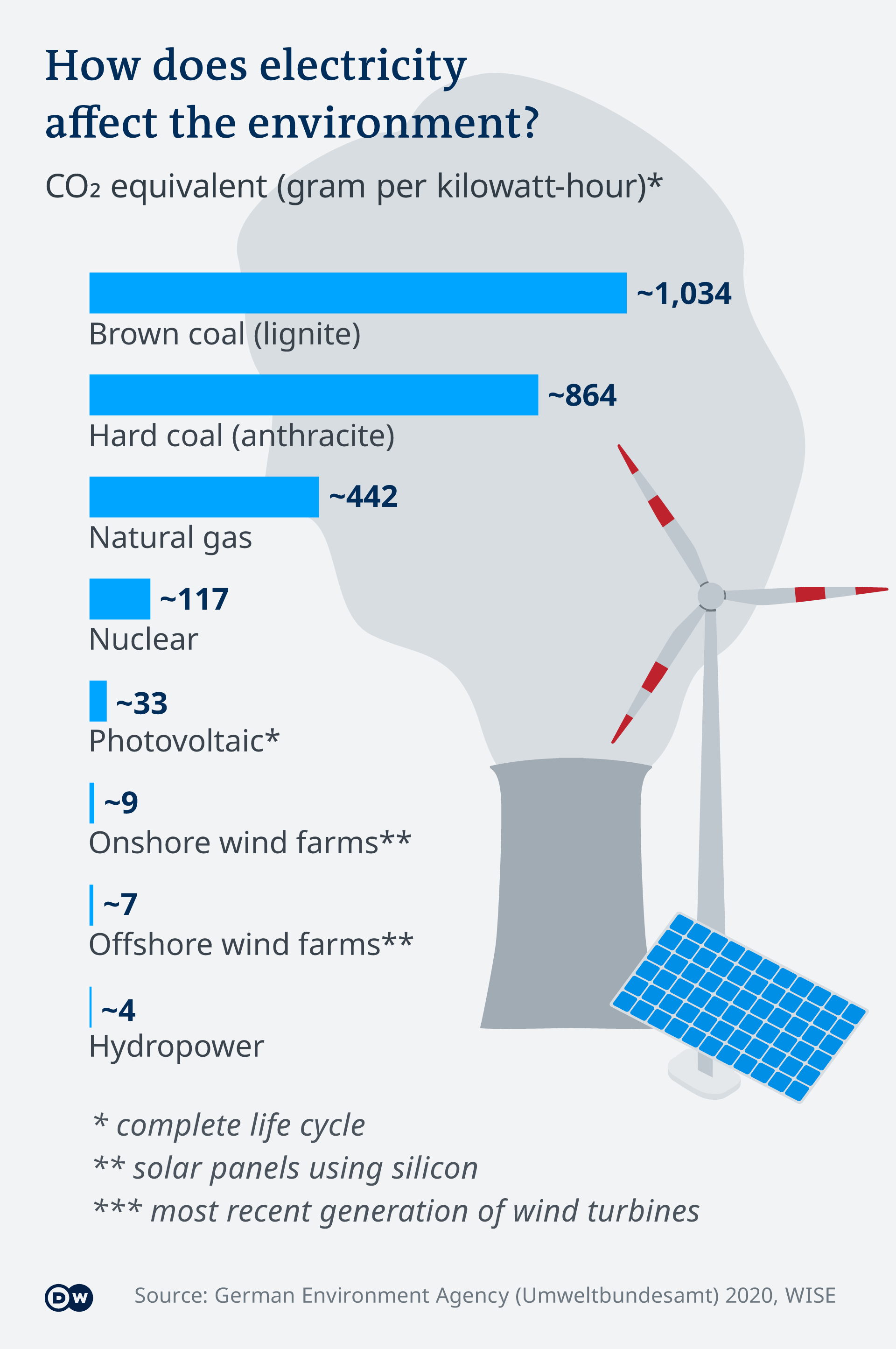An icy wind is blowing across the Brokdorf nuclear power plant that stands between damp meadows and a thinly snow-covered dike in northern Germany.
A small group consisting mostly of elderly people has placed a yellow banner above the gate to the reactor that reads “Shut down nuclear power stations.”
Gathered on this wintry grey day in the northernmost state of Schleswig-Holstein, the activists are mostly from the area though some have come from Hamburg and beyond.
Singing peace songs and chatting while standing in a circle, the groups appear well-adjusted to the freezing cold having met at the nuclear power plant’s gate for 35 years on the sixth day of each month.
The activists organize a vigil to remember the victims of nuclear disasters and demand the immediate shutdown of their local nuclear reactor.
Today is different. This 425th vigil will be the last. The German nuclear phase-out 2022 will see the Brokdorf nuclear power station shut down.
It has been both controversially built and one of the most productive reactors in Germany.
Pastor Hans-Gnter Werner co-founded the activist initiative. He said, “I’m glad that it’s being phased out.” “So, I’m not sad, but I’m a little nostalgic because we won’t be meeting again soon.”
“But for the most parts, I feel relieved to see that the operation of nuclear power plants is finally coming an end,” he stated. “At the time we didn’t anticipate that we would have to stand here for so many years.”
The first German nuclear reactor, after Chernobyl
Hundreds of thousands protested against Brokdorf’s construction of the nuclear power plant in 1980s amid an escalating anti-nuclear sentiment.
Time and again, the protesters clashed with the police especially after the nuclear accident in Chernobyl in 1986 saw increased radiation levels in soil and in foods in Germany.
“I had very small children who were not allowed in the sandbox. “We all panicked,” Werner said at the edge of the vigil.
Brokdorf, which was inaugurated in late 1986, was the first reactor to be operational in the world after the Chernobyl catastrophe.
Pastor Werner and a few of his supporters protested peacefully. They agreed to meet once per month until Brokdorf was closed.
He says that “showing opposition” and protesting also “helped us to combat our own fears.”

Some 100,000 anti-nuclear protestors marched against the Brokdorf plant on February 1981. Police clashed with them
Increased cancer risk and an open ice rink
His fear was not unjustified. A 2008 study showed that children who grew up near a German nuclear power station were at greater risk of developing leukemia.
Despite such health risks, plants continued to be open. One reason could be the Brokdorf municipality’s decades-long high revenues from a commercial tax on the plant. Local politicians were reluctant to give up this income.
The village of less than 1000 people was able to finance a 7-million Euro ice rink through the nuclear tax. The ticket prices for the public pool with a 100 meter water slide and a public swimming pool were also extremely low.
Brokdorf mayor Elke Gettsche stated that the plant was a commercial activity.
Gttsche would prefer that the nuclear power plant stayed on the grid for a longer time. She argued that this would have facilitated the transition to renewable energies. But the funding boom that was brought about by nuclear reactor is over.

Since 1986, Pastor Hans-Gnter Werner helped organize the monthly protests against Brokdorf’s nuclear reactor
Climate credentials are claimed by nuclear power
Germany is closing all of its nuclear power plants by 2022. However, other countries such as France, Great Britain and the USA, India, Russia, China, and the US continue to rely upon atomic energy.
Globally, it is around 440 nuclear reactorsAround 10% of the world’s energy supply is still provided by these reactors. This year, 50 nuclear reactors were under construction, with 18 of them being built in China.
Three hundred additional nuclear plants are currently under construction. Meanwhile, the nuclear power lobby is promoting nuclear energy as an allegedly clean and, most importantly, climate-friendly alternative.
Emanuel Macron, the French president, announced this year that France would start building smaller nuclear plants in order to reach climate neutrality by 2050.
Emissions from nuclear energy are significantly lower than those from coal, oil and natural gas.
However, nuclear power is much more expensive than electricity from wind or solar energy. Also, construction takes much longer.

Nuclear power for military purposes
The fact that states still stick with nuclear power clearly also has another reason, said Andrew Stirling, professor of Science and Technology Policy at the University of Sussex.
“Globally speaking, those countries that are the most truly dedicated to a civil use of nuclear energy either also have nuclear weapons or they are very keen on getting them,” he explained.
According to Stirling, the civil use of nuclear energy is often needed for the realization of nuclear weapons programs, a point admitted by nuclear armed France and the US.
Stirling explained that it would be impossible to build nuclear powered submarines without the expertise and engineers in the commercial nuclear power sector.
“The USA has made clear statements. Stirling said that even though the cost of nuclear energy is twice as expensive, it would still make sense to build reactors since this allows them continue their military activities.”
The last Vigil
The Brokdorf activists look back at 35 years of protests together, sharing coffee, cake, and pumpkin soup.
Photo collages are made from images taken from private photo albums.
Brokdorf will be removed form the grid on December 31, 20,21. However, the plant can continue to serve as a temporary nuclear waste storage facility for decades. There is still no final repository to store radioactive waste.
One activist said, “Therefore. our commitment isn’t yet over.” Soon after, someone begins to play the guitar.
The protesters leave the Brokdorf plant singing tonight. For the first time in 35 years, they’re also leaving as winners.


